#springburn
Explore tagged Tumblr posts
Text







2 bedroom flat for sale on Broomfield Road, Springburn, Glasgow
Asking price: £155,000
Sold price: £196,000
11 notes
·
View notes
Text








Between November 2001 and May 2002, Virgin Trains repainted several class 47s in heritage liveries to mark their final days working cross-country services before replacement by Voyagers. The first loco to receive a heritage makeover was 47826, which was still carrying Intercity Swallow livery in 2001, so Toton works decided to give the loco a fresh coat of the Intercity colours and reunited it with the Springburn nameplates it had carried during it's 47637 days in the 1980's. After withdrawal by Virgin, 47826 went to work for West Coast Railways and retained it's Intercity colours until a graffiti attack in mid 2007 led to it being repainted into WCR's dull brown livery. 47826 does hold the distinction of being the only Virgin 47 to never carry Virgin colours.
0 notes
Text



January 5th 1899: saw the first electric-powered tram in Glasgow begins the replacement of the horse-drawn service.
The very beginnings of trams in the city can be traced back to The Glasgow Street Tramways Act of 1870, which allowed Glasgow Town Council to decide if they wanted to put tramways on the streets of the city.
The first horse drawn tram route was laid in 1872, running for a length of 4km between St George's Cross to Eglinton Toll on the south side of the city across Jamaica St bridge.
Fast forward 16 years, and in October 1898 the Glasgow Tramways Committee commenced an experimental electrified tram route between Springburn and Mitchell Street, the success of which paved the way for the electrification of the city's tram routes.
Doing so would see electric trams replace the more than 3000 horses used by the council to pull the cars over 150 miles of track throughout the city, which begun in 1899 when the council made a commitment to electrification.
Even with a top speed of 8 miles per hour, electrified trams were cheap, comfortable and - most importantly - reliable, and it wouldn't be long before they completely dominated the urban transport system of Glasgow.
n 1902, in a year when horse drawn cars stopped operation and with only half of the city's electrification complete, trams were already carrying 20% of the passenger total for the whole of Scotland.
Tram use became even more ubiquitous once the tram lines extended into the city's suburbs, peaking in 1919/1920, when an estimated 97.9% of people in the city used trams to move around - at a time when Glasgow had one of the most densely populated urban centres in Europe.
At one point in time the junction of Jamaica Street and Renfield Street in Glasgow city centre was among the busiest in the world, with an estimated 466 tram cars passing through every hour, a figure that would increase to 516 on Saturdays.
And the trams continued to be the most popular form of public transport in Glasgow well into the 1940's while in direct competition to buses, carrying up to four times as many passengers as buses as late as 1947.
Ten years later, over 1,000 tram cars were still serving city, carrying 300 million passengers a year over more than 250 miles of routes, yet trams had started to become an unprofitable enterprise for the city's transport department - in the face of the profitability of both the bus and subway network.
The last available figures released by Glasgow Corporation Transport Committee showed that in 1956/1967 52% of transport users used the tram network to get around , yet even so change was underfoot.
And despite the fact that Glaswegians were fiercely proud of their 'caurs', the tram system was gradually phased out between 1956 and 1962, with the final trams operating on September, 4 that year to mark the end for an era both for the city and its transport network.
62 notes
·
View notes
Text
Peter Capaldi on Cricklewood Greats, The Thick of It and Malcolm Tucker
31 January 2012 by Ginny Dougary
We are in Peter Capaldi’s spacious, if spartan, dressing room in the vast, empty, 1930s Hornsey Town Hall in north London. The actor’s days are spent filming (he’s working on the second series of The Hour, in which he is the new head of news) and his nights are on stage (as Professor Marcus in The Ladykillers); a punishing schedule from which he emerges looking exhausted, hardly surprisingly – chalky white, with a nose-dripping cold, and exceedingly thin.
He is dressed in a 50s costume of drab grey suit with braces and black-rimmed spectacles – so similar to his own pair that he later struggles to remember which are his. When I sit on one of two sofas, he asks if I would mind swapping because he needs to protect his back while he eats his BBC canteen lunch, a suitably retro plateful of roast pork and two veg.
It is his only mildly unchivalrous act (the springs on the sofa I sit on are shot and I sink to the ground); the rest of the time, he couldn’t be more charming and less like the Bafta-winning role for which he is most famous, foul-mouthed Labour spin doctor, Malcolm Tucker in The Thick of It.
Cricklewood Greats
What Capaldi would clearly like is to have a post-lunch kip on the bed in the corner of his room with its girly, pastel-patterned duvet (which, positively Sherlock-like, I divine correctly as belonging to his teenage daughter, Cissy.) But, alas, he has something to promote, and since he wrote it, directed it, presented it and even designed the art work that appears in it, he’s just going to have to be a trouper and get on with it.
Cricklewood Greats is a send-up of those reverential documentaries where the presenters talk in hushed tones about the legendary long-dead stars of now-defunct film studios.
It starts with the silent movies and a familiar, bowler-hatted comical chap called the Little Drunk, through the 1930s comedies of Florrie Fontaine with such mega-hits as Florrie Drives a Lorry, the horror B-movies featuring Dr Worm, thence Dr Jekyll and Matron Hyde (“He always brought class to films that didn’t always deserve it”) leading to the finale of Terry Gilliam’s Professor Hypochondria’s Magical Odyssey, whose literally explosive direction finally did for the studios.
So is this his revenge for countless hours of television irritation? “Actually I love these sort of documentaries, which you might turn on late on a Saturday night – like, say, The Alma Cogan Story,” Capaldi says. “But they are ripe for spoofing, because the presenters are always so serious and anxious to make themselves look like rather attractive and interesting people.”
What appealed to him about the project was not the presenting role, but the idea that he could make “these tiny little films, y’know. [In 1995, he won an Oscar for directing a 20-minute short film, Franz Kafka’s It’s a Wonderful Life.] And I thought how fun it would be to do one with fictional characters. Those programmes always tend to be about very successful characters and I like the idea of slightly unsuccessful people who showbusiness jettisoned at a certain point.”
Upbringing
Capaldi was brought up in a poor but respectable Glaswegian tenement, as the actor describes it, in Springburn, with his sister, his late father Gerry, son of an Italian shepherd from a little village near Monte Cassino, and mother Nancy, of Irish parentage.
Nancy and Gerry ran a café on the ground floor of the tenement they lived in. Also in the block was Peter’s paternal grandmother, his maternal grandmother lived opposite, his uncles and aunts and their children in the building behind them.
“It was the tail end of that very traditional, extended family and I loved it. My Italian granny and my mother made great spaghetti, but it wasn’t a kind of southern Italian, Godfather-esque kind of thing – it was a wonderful, big mixing pot of all kinds of people – when you came home from school and your mum wasn’t in, there were lots of people you could go to.
“It was quite poor. Where my grandmother lived, the only toilet was a communal one on the landing, but it was spotless.”
Artistic child
His uncle Peter, after whom the actor was named, and his father were both talented painters and encouraged young Peter to draw, “which I did well, from when I was a child, so there was always the belief and encouragement that I would do something artistic.”
His desire to act was based on a few random plays he had taken part in at school but “we were not a literary family, we didn’t go to the theatre, we never listened to Shakespeare… I just fancied the idea of acting. It seemed like a fun life.”
He applied to a number of drama schools in London but when he failed to get in, enrolled instead at Glasgow School of Art, where he was a contemporary of Peter Howson, who went on to be the official war artist in Bosnia.
Lucky break
Capaldi was in a band called the Dreamboys who used to support the slightly more memorable Altered Images, with fellow Glaswegian, Clare I Could Be Happy Grogan. She had starred in the charming Gregory’s Girl by Bill Forsyth, the director who was to change Capaldi’s path – in one of the many flukey twists and turns that mark the actor’s life.
The director was a friend of Capaldi’s costume-designer landlady, and on meeting the lodger in his pal’s kitchen one night, was so struck by “the drama” of the 23-year-old’s face that he cast him as a young oil-company employee opposite Burt Lancaster in Local Hero, released in early 1983.
When I say that in my mind’s eye I can still see that callow young man (there was something unusually striking about his face, as well as his acting) but that it fades in and out of Tucker’s snarl, all these years later, Capaldi laughs: “Well, I’m lucky enough to have hung around for that amount of time. I’ve been lucky enough to hang on!”
After the excitement of his lucky break… nothing. “It was a different time. Now kids go to drama school and then leave straightaway to go to Los Angeles and meet piles of agents. But I wasn’t a trained actor. I had no idea what you did. So I just went back to Glasgow and spent all my fee on curries and lagers and taking my friends out.”
The road to Hollywood
Eventually, he arrived in London where he was helped by fellow Scots actor Denis Lawson, who he knew from Local Hero. There was a good part playing the manservant to John Malkovich’s Valmont in Dangerous Liaisons in 1988, but not much else stands out.
In 1993, he wrote and starred in a low-budget Scottish road movie, Soft Top, Hard Shoulder, that won the audience award at the London Film Festival. Then came his Hollywood moment with Franz Kafka’s It’s a Wonderful Life; the idea arising, fortuitously, when Capaldi’s wife, Elaine Collins, an actress turned producer, muddled up the existential writer with the American director, Frank Capra.
On the back of this success, doors were opened in Hollywood, flesh was pressed, deals were struck and then unstruck. The mighty Miramax gave the go-ahead on a screenplay, Moon Man, that Capaldi had worked on for a year, flew him out to Manhattan to toast his success, but en route – mysteriously and humiliatingly – the green light had turned to red.
The Thick of It
The family home in London’s Crouch End was paid for, however, by the fat fees from the company and was duly dubbed Villa Miramax. In 2001, Strictly Sinatra, a film Capaldi wrote and directed starring Ian Hart, was a flop, followed by years of Poirot-this and Foyle’s War-that, before Armando Iannucci, another Scots-Italian who had been brought up in the same street as Capaldi – as the two of them later discovered – had the good sense to see that Peter would make a brilliant Malcolm Tucker.
This offer came in the nick of time, as Capaldi was seriously contemplating another career. “Although it wouldn’t have really been what I wanted to do, I had started sending out story-boards that I’d drawn to various directors because I’d thought, ‘I’ve got to get a job. I’ve got to get some other work.’”
His misadventures in Hollywood were what inspired his creation of Tucker rather than, as is widely thought, Tony Blair’s former director of communications Alastair Campell.
“The only people that I had witnessed personally behaving in the way that Malcolm does were American agents or producers. You could see people at ICM in Los Angeles – malevolent forces in Armani suits – barking the foulest and most terrifying of obscenities down the phone at people.
“The producers, too. Harvey Weinstein and the team at Miramax were long celebrated for Malcolm-like behaviour, so in fact they were the people I thought about. That was the model I took, rather than Alastair Campbell, as I didn’t know him. Alastair might be a bit disappointed to know this!”
Playing Malcolm Tucker
The Thick of It returns later this year, for a fourth season. I wonder whether Capaldi actually likes his character? Does he find him satisfying or liberating to play?
“I like Malcolm very much. He’s got a heart of gold [Really?] and he’s only trying to do his job; it’s not his fault that he’s confronted by an army of idiots. It’s quite exciting to play him, because he tends to always be on the offensive and he gets given wonderful lines, lots and lots of them. As any actor will tell you, that’s an attractive position to be in.
“His verve, his vigour is a great tonic. Also I think he’s quite complicated, he’s not just a swearing man. He lives in a real world full of tough people making tough decisions. At his best he cuts through that world with a certain spring in his step and humour; get in his way, though, and he’ll cut you open with his face.”
I wonder how much he finds himself, after seven years – off and on – of playing the man, maybe sharing some of Malcolm’s characteristics a little bit at home? “Unfortunately, if you spend hours being scornful, there’s a residue left when you ask ‘Where is the TV remote control?’ or ‘What do you mean, I have to mow the lawn?’”
Do your family and friends ever tease you about Malcolm-like tendencies? “It’s most commonly said that I’m very nice and not like Malcolm at all. But some of my friends feel that he does lurk inside me. They think they had seen him long before he appeared on the television and he’s still there and not to be disturbed.”
Politics
Capaldi has been described as coming from an “Old Labour” background, but when I ask him about his parents’ politics, he laughs: “They’re so not political… that’s why I’m laughing.”
He talks movingly about how in the big, tough industrial cities of Glasgow, Liverpool and Newcastle, “there is a great embracing of creativity and a great pride in it. The Billy Elliot thing is quite rare… Actually, I think people are thrilled to see young people with their gifts… unless they’re dumb.
“I lived through a golden period where society felt that it was good to help people who didn’t have a great deal of money fulfil their potential. It’s sad, considering where we are now. I wouldn’t be here if it were not for the grant system that paid for me to go to art school – because my parents couldn’t have afforded it.”
Art
He still tries to draw every day, inspired by John Byrne, the 70-something artist, playwright and father of Tilda Swinton’s children, who once told him, à propos of his own daily regimen: “If you can do this, why wouldn’t you?”
He talks, very tenderly, about “the succour” of looking at great paintings by Vermeer and Rembrandt, the drawings of Holbein through to the Turner-shortlisted George Shaw, who paints the Coventry estate he grew up in.
Ambition
Sometimes, he wishes that he had made it in Hollywood: “I’m not on the radar there… but the only reason I’d want to be is because occasionally you see something magnificent, and you just think, ‘Oh, I would love to be part of that!’”
Like what? “Michael Mann’s The Last of the Mohicans. It’s not just epic, it’s the craft of film-making taken to an extremely high level. The costumes are fabulous, the sets are fabulous, the script is fabulous… the acting is extraordinary. And we never do anything like that, you know.
“So you think, ‘There is a wonderful thing’ and, yes, of course, I would love to be part of it but you have to set out to do that and move away from your family or move them with you.
“I guess you’d earn an enormous amount of money, and I’ve never had to make that decision. But also, I’m too…” a very long, thoughtful pause, and then a big laugh, “Well, I suppose I like my life exactly the way it is.”
Radio Times
#peter capaldi#ginny dougary#radio times#interview#2012#cricklewood greats#malcolm tucker#the thick of it#the hour#randall brown
12 notes
·
View notes
Video
London St Pancras 5th March 1977 por loose_grip_99 Por Flickr: In BR Blue with full yellow ends Sulzer Type 4 Peak 1Co-Co1 45103 has arrived at St Pancras from the Midlands and is sitting at the buffer stops beneath the fabulous victorian trainshed. Built at BR Crewe in September 1961 as D116 this engine was withdrawn after almost 27 years service in August 1988. 2 years later it was cut up by MC Metals in Springburn Glasgow.
12 notes
·
View notes
Text
Looking to stay near Mall Road in Darjeeling? Here’s a curated list of top-rated hotels close to the heart of town: lets discuss about hotels in darjeeling near mall road
🌟 Premium & Heritage
Mayfair Darjeeling – A colonial-era heritage property right on Mall Road, it offers stunning mountain views, spa, gaming room, multiple dining venues, and warm, upscale comfort reddit.com+15veenaworld.com+15delighthotels.in+15.
The Elgin, Darjeeling – Elegant heritage lodge 5 min walk from the Mall, with spa, Jacuzzi, and classic Himalayan charm mountalign.com+2goibibo.com+2reddit.com+2.
Ramada Darjeeling – Modern property with reliable service and balconies overlooking Darjeeling; praised for easy access and convenience .
��� Mid-Range & Boutique
Summit Oakden Resort & Spa – 3-star spa resort ~500 m from Mall Road; great breakfast, bonfire setup, and couple-friendly reddit.com+15goibibo.com+15yatra.com+15.
Central Gleneagles Heritage Resort – High-end boutique with mountain-view rooms, spa, library, horse riding—literally 10 m from Chowrasta/Mall delighthotels.in+2honeymoonbug.com+2goibibo.com+2.
Gakhil Boutique Hotel – Cozy boutique stay just 0.21 km from Mall, with good location and personalized service us.trip.com+1bag2bag.in+1.
🐾 Other Noteworthy Stays
Hotel Cedar Inn – Known for spectacular Kanchenjunga views, and even has ground-floor rooms for accessibility reddit.com+2mountalign.com+2reddit.com+2.
Muscatel Springburn – Just 100 m from Mall; clean small hotel with local charm and spa goibibo.com+1reddit.com+1.
🗺️ Pro Tips from Travelers
“Hotels are safe…non‑OYO hotels allow unmarried couples.” reddit.com “For the view, Cedar Inn is love…Mayfair and Elgin are old‑school hotels which have retained some of the colonial charm.” reddit.com+1reddit.com+1
🧭 Quick Comparison
HotelCategoryDistance from Mall RoadHighlightsMayfair5★ HeritageOn Mall RoadSpa, games, heritage & mountain viewsThe Elgin5★ Heritage~5 minutes walkColonial charm, Jacuzzi, cozy ambianceRamada Darjeeling4★ Modern~3 minutes walkBalconies, convenience, family-friendlySummit Oakden Resort & Spa3★ Mid-range~500 m driveSpa, bonfire, breakfastCentral Gleneagles Heritage ResortBoutique Deluxe~10 m from ChowrastaMountain views, spa, libraryGakhil Boutique HotelBoutique~200 m from MallCozy, personalized serviceCedar InnScenic Boutique~500 m from MallKanchenjunga views, accessible roomsMuscatel SpringburnBudget & Spa~100 m from MallClean, spa, intimate setting
✅ Booking Guidance
For heritage splendor & unmatched views: Go with Mayfair or The Elgin.
For modern reliability & convenience: Ramada is a solid pick.
For spa lovers on a budget: Choose Summit Oakden or Muscatel Springburn.
For cozy and personal stays: Try Central Gleneagles or Gakhil Boutique.
For view lovers and easier mobility: Cedar Inn is highly recommended.
Want help checking live availability, best rates for your dates, or booking assistance? Just let me know!
you can also watch budget friendly hotels in pushkar video in our channel.
0 notes
Text
Old stobhill hospital, Springburn
youtube
1 note
·
View note
Text
Springburn Glasgow Junkies, Council Buildings, College, Pubs And More
0 notes
Text
For most of my life for never thought my city was the closest thing to New York City. Because my born city is a different world by tell never be Maryhill, Possilpark and Springburn. Well, Glasgow centre is the heart of the city. Three place I did mention are Devil's butt how for that place is bad and not a safe place to live in.
0 notes
Text
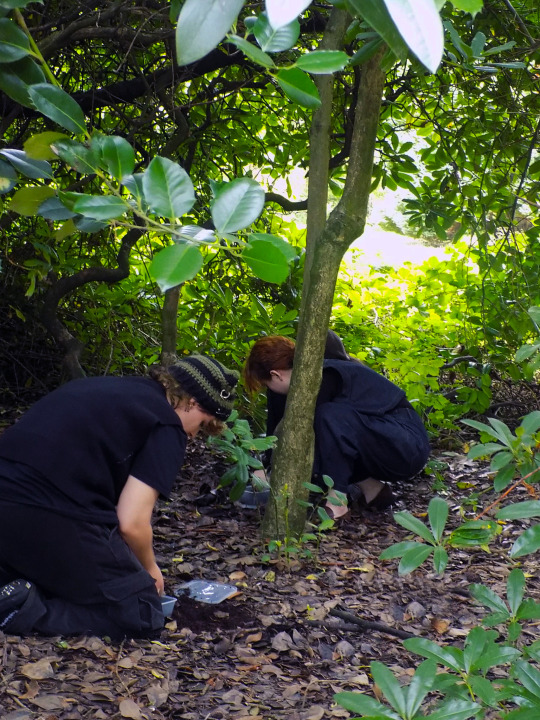


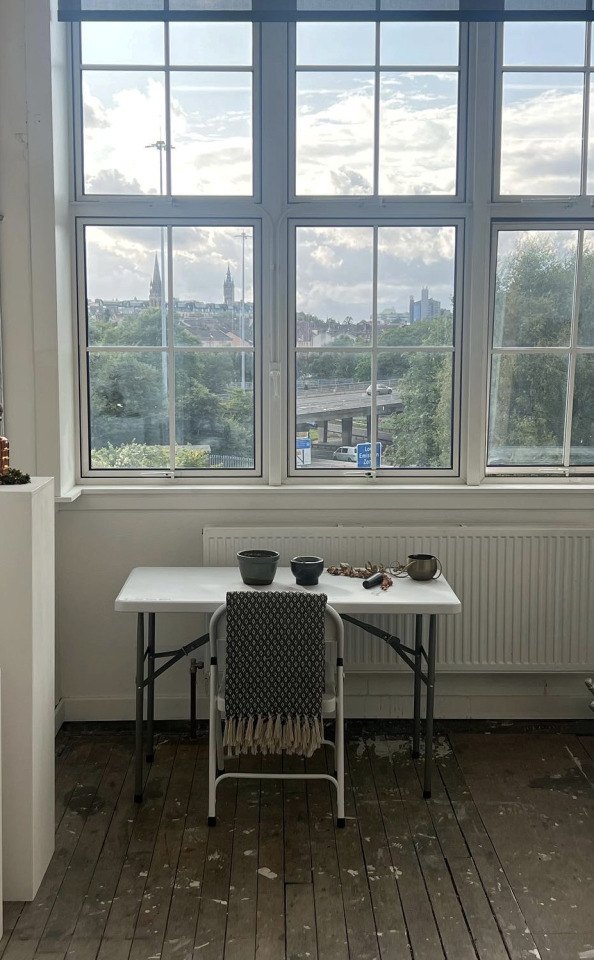

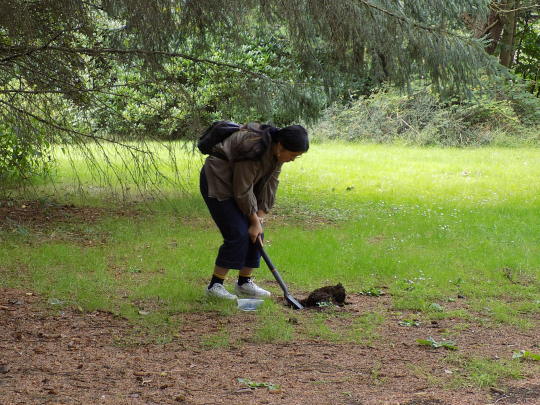
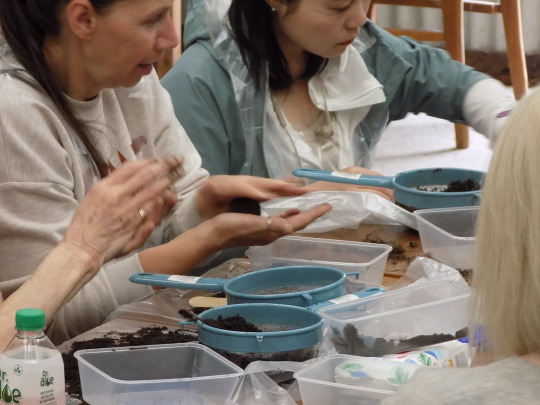


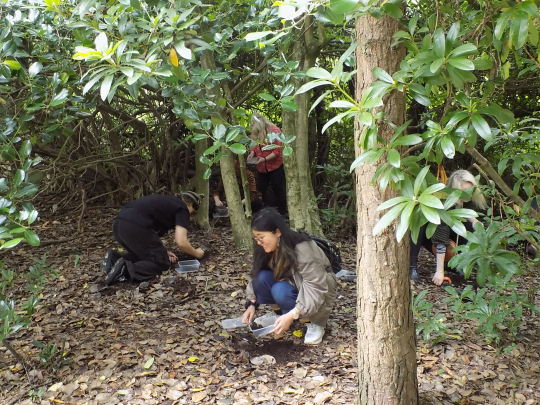
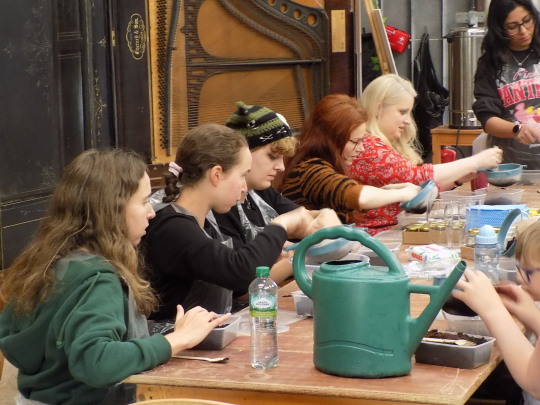
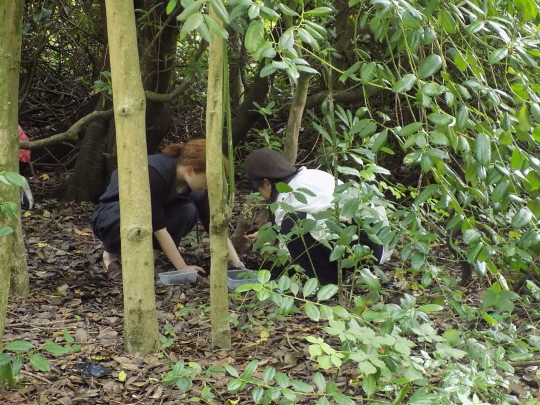
Katie Garden MLitt Curatorial Practice
Commended, GSA Sustainability Post Grad Degree Show Prize 2023
Urban Green Space: Unheard Earth
Urban Green Space: Unheard Earth is an extension of the research I have carried out during the first two phases of my Masters. My exploration of community engagement began in the early stages of this course when I became familiar with Dr Megan Johnston and her research on slow curation. I was intrigued by Johnston’s practice and her consideration of the benefits of slow curation and how it positively impacts communities. Using art resources to benefit the lives of communities is an area in which I aim to further my own curatorial practice. Researching and working in such environments has made me question the role of the curator in a larger curatorial context and where I place myself as a curator.
Urban Green Space addresses the neglect experienced by Springburn Park and explores a creative response to urban green space and the impact it has on mental and physical wellbeing.
The project was a collaboration with the Springburn Auditorium and artist Sana Obaid. The result was The Art of Dorodango: Connecting with Earth and Cultivating Mindfulness workshop led by Sana.
The workshop as described by Lead Artist Sana Obaid Dorodango is a Japanese craft which involves making small balls of mud and polishing them with wet fingers to make them smooth. This craft is popular among children in Japan, but adults also take part in it as a hobby or artistic form. Dorodango transcends mere artistry; it is a gateway to profound meditation and creative expression; a process that demands complete attention, fostering mindfulness and focus.
Through my personal experience of crafting dorodango, I have discovered a deep connection with the earth—a profound sense of care and humility. While the act of shaping a simple mud ball may seem deceptively easy, attaining the perfect, radiant sphere requires patience, unwavering focus, and unwavering dedication. As you hold the earth in your hands and transform it into something sublime, a sense of humility washes over you. The act of creation, rooted in the elemental nature of mud, imparts invaluable lessons—simple yet profound. By truly immersing yours. lf in the process, your mind finds tranquillity, and you unearth the wisdom that lies within the simplicity of each step. Dorodango becomes a unique and meditative endeavour—one that fosters connectivity not only with the Earth but also with our inner selves. In this workshop, we aspire to delve into the transformative power of dorodango, weaving together the threads of meditation and creative expression.
By embracing the simplicity of this ancient craft, we embark on a journey of self-discovery and connect deeply with the world around us. May this humble path, where the act of moulding mud becomes a profound testament to the artistry of existence itself.
Email Instagram
1 note
·
View note
Text






2 bedroom flat for sale on Syriam Street, Springburn, Glasgow
Asking price: £139,000
Sold price: £160,000
6 notes
·
View notes
Text
We donated some clothes to a charity shop in about 2019 ish. They were selling some of it for more than we paid new....
I've found that if you're in the posh area of the city forget it (Edinburgh city center, Glasgow west end etc) but poorer areas it's more reasonable. Found some good stuff recently in springburn and maryhill. Presumably because if they price stuff that high there people think they're insane (they are!)
I feel like something has gone wrong when IKEA particle board furniture is cheaper than everything in the thrift store.
Especially when the stuff in the thrift store is also particle board. It’s just particle board someone’s scuffed up and painted badly with white chalk paint to make it look ‘shabby chic’.
Anyway, you can tell the boho farmhouse trend is dying because the knick-knack aisle was nothing but metal troughs and fashionably distressed white cabinets made of shiplap. I dread the inevitable influx of griege that’ll happen when the sad beige mommy’s decide to redo their houses.
Finding interesting pieces has already gotten harder without adding brown and greige plastic rainbow toys to the mix.
4K notes
·
View notes
Text


87001 Royal Scot outside Springburn works fresh from overhaul in the early 1990's.
0 notes
Text




The actress Molly Weir passed away on November 28th 2004 aged 94.
Probably best known for the character Hazel the McWitch in the BBC TV series Rentaghost, Molly was brought up in the Springburn area, she began in amateur dramatics. In her early professional career, she was a well-known radio actress, featuring in many comedy shows,in the 50's sitcom Molly had a regular role as the housekeeper, Aggie McDonald, in Life With The Lyons. In film she played one of The Kerr sisters in The Prime of Miss Jean Brodie with Helena Gloag, a partnership she renewed in the Albert Finney film Scrooge, playing old sisters in debt to Mr Scrooge.
In the 1970s she was one of the presenters of Teatime Tales, a television series broadcast by STV in which she recalled her childhood. As well as the childrens programme Rentaghost Molly will be remembered by a lot of us as the woman on the Flash adverts and the tag "flash cleans floors/baths without scratching"
She was also a popular public speaker, newspaper columnist and her memoirs run to eight volumes.
After her death, Molly Weir's ashes were scattered on the banks of Loch Lomond, a favourite holiday location of both her and her famous brother Tom Weir; and almost all her estate (of nearly £1.9 million), was bequeathed to charities.
13 notes
·
View notes
Text
INTERVIEW
No more Mr Nice Guy
Thu 31 Aug 2006 01.03 CEST
Stuart Jeffries
After two decades playing charming, easy-going types, Peter Capaldi has hit the big time as a diabolical spin doctor. So why does the star of The Thick of It seem so miserable? He talks to Stuart Jeffries
'I hate restaurants that play music," says Peter Capaldi. "You come out for a quiet meal and you're supposed to put up with all this booming. Why? It's madness!" It is too soon, one might think, for the 47-year-old actor to start playing Victor Meldrew, but he is making a remarkably convincing go of it. His expressive left eyebrow has shot up a good three inches.
We're standing in the doorway of a London restaurant, wondering where to conduct the interview. The noise is boombastic, but not in a good way. Capaldi stomps upstairs away from the racket. If there was an audition for Last of the Summer Wine at the top, he would be a shoo-in to play Nora Batty's crotchety love interest. But there is no audition. Only a booth where we can sit and he can moan.
Capaldi is supposed to be talking about the gentle new BBC comedy drama Aftersun, in which he plays a sandal-and-sock-wearing middle-aged grump. What drew him to the part, I ask. "I read the script and I thought: this is me." Capaldi used to be a troubled young art school rebel, the front man in a Glasgow punk band called the Dreamboys. Now he's a man who complains about restaurant music. "It happens to all of us," he says.
Who is Peter Capaldi? More likely than not, you're thinking, "Wasn't he the bloke who was in that thing?" And the answer is, "Most likely, yes. Yes, he was!" He has been in more than 40 films and TV dramas, including Judge John Deeds, Shooting Fish, Foyle's War and Iain Banks's The Crow Road. He was John Malkovich's resourceful manservant in Dangerous Liaisons and he even has an Oscar for his first short film, of which more later.
But you probably know him best as Malcolm Tucker in Armando Iannucci's political sitcom The Thick of It. Tucker was originally going to be a composite of spin doctors - Campbell, Mandelson, perhaps even Charlie Whelan - but as the series evolved Tucker became less suave and more boorishly Campbellian. He looks like a man whose head is ready to explode; he swears like a trooper and makes horrible threats with the abandon of a Caesar trying to forestall the collapse of his disgustingly corrupt empire. Indeed, because Tucker is required to swear a lot, Capaldi finds himself swearing more at home, which must be nice for his wife Elaine and 12-year-old daughter Cissy.
Capaldi, who has had something of a topsy-turvy career as an actor, says his newfound nastiness makes a welcome change. "I'm usually required to be boyish, easy-going and charming. So I leapt at this role." In the audition for The Thick of It, he played opposite Iannucci, who took the ministerial role. They improvised a scene in which he told Iannucci that there had been a lot of speculation in the press about him resigning and that the government had every confidence in him, but that if he didn't go they would look weak so he ought to resign. Up to that moment, Capaldi had played it nice. Then he turned nasty: he made it clear that if Iannucci didn't resign he would end up at the bottom of the river. Metaphorically, of course. Once he had got the part, Capaldi went on to say lots of rude and hostile things about leading politicians, the most publishable of which seems to be: "He's about as much use as a marzipan dildo."
Capaldi and Iannucci discovered that they grew up on the same street of tenements in Springburn, Glasgow. They did not know each other, though. Otherwise, as Capaldi points out, they might have exchanged pre-verbal greetings from passing prams. Both were born to Italian immigrants, though it was the Capaldis who had the ice-cream delivery business. He once used his family's business in his screenplay for the 1992 film Soft Top, Hard Shoulder, about a Scottish-Italian who will inherit part of the family ice-cream business if he can make it back to Glasgow in his clapped-out Triumph convertible in time for his father's 60th birthday.
Now, however, Capaldi is somewhat in awe of the younger man who directs The Thick of It. "Armando likes to keep us nervous. We always get the scripts late and barely know the words when we film. I think he likes us to be scared so we can't rely on our technique. The scripts are always brilliant, very closely plotted and perfectly finished. We always shoot a word-perfect version and then shoot another version in which we improvise. There's always much more shot than you see."
Capaldi will play Tucker in an hour-long special of The Thick of It to be filmed in October. He is tight-lipped about how the child pornography charges that actor Chris Langham faces will affect the making of the special. "I don't know anything about what it will involve, except that it will be about the opposition." But isn't Tucker supposed to be a Labour spin doctor? "I don't think he'd have any trouble working for the Tories." And didn't Langham play a Labour minister? Capaldi agrees, but will say no more.
Tucker is the latest incarnation in a career that has seen Capaldi go from Oscar winner to Hollywood reject. It all started in a Glasgow flat when he came home a little drunk to find Bill Forsyth in his kitchen, chatting with his landlady, a costume designer. Something about Capaldi's innocent, charming demeanour appealed to the Scottish director and he cast the young man opposite Burt Lancaster in his 1983 film Local Hero. After that strange debut for a 25-year-old film and art student, Capaldi spent the following decade in bedsits and rep, before winning that Oscar as director and screenwriter of Franz Kafka's It's a Wonderful Life, which starred Richard E Grant. He thought for a moment that he had hit the big time and could become a director. "The truth is that I got to Hollywood and I didn't know what to do once I got there." He claims to have gone to one Hollywood meeting, where it was discovered he was not up to direct a movie, and, disappointed, got the next flight home.
His CV suggests a career that has gone in cycles - plucked from Glaswegian obscurity to star in a film opposite a Hollywood legend; wilderness years in rep; an unexpected Oscar; years of journeyman roles; and now back to prominence as Malcolm Tucker. His performance as the latter has made the phone ring with offers of acting work. "A year ago nobody was interested in me. I am suddenly wanted as a very bad man, rather than whatever I was before."
But if directors have Capaldi pegged as a very bad man like Tucker, how come he plumped for a role in Aftersun that, after all, requires rather gentle comedy? "I was just sent the script. But you're right - the director was worried about whether I could do gentle comedy after Tucker." Even though you've been doing that for much of your career? "Quite."
Aftersun tells the story of Sue and Jim, a couple who married young. Twenty years on, she is on antidepressants for empty-nest syndrome while he is basking in the fragile professional pomp of being the king of MDF. Then, as an anniversary present, the couple's children send them on a two-week holiday to a Spanish villa. On arrival they discover that they're sharing a pool with a pneumatic 20-year-old toff hottie and her no less vexatiously young and lithe Spanish himbo. Hilarity, thanks to David "Cold Feet" Nicholls' script, ensues for the best part of an hour.
The comic drama of pristine youth confronting vulnerable middle age is what keeps Aftersun compelling, along with the sniping rows between Capaldi's Jim and Sue (played by Sarah Parish from Cutting It). At one point he returns to the villa to find Sue smoking a joint beside the pool with the Spanish himbo. "It smelled like a crack den!" he says, with ludicrous overstatement.
"The script spoke to me because of the fungal infection on my feet," Capaldi says now. I sneak a glance at them: sandals, no socks. Jim, by contrast, wears special anti-fungal socks that must make him a devil with the ladies when he wears them with sandals. "In my case," Capaldi says, "the doctor says it's better to keep the air flowing."
Capaldi complains that there are too few grumpy roles for middle-aged men. "It seems to me that most things that are being made are designed for young people. There are aren't that many depictions of melancholic older people, even though they form a growing proportion of the population."
But he has no plans to get stuck in the middle-aged acting rut. He hopes to return to directing with a project called The Great Pretender, which sounds like a philosophical seminar on Kantian metaphysics rather than a Saturday night no-brainer. "It's a film about the making of a film about the life of Bonnie Prince Charlie. It has four parts for Ewan McGregor." I see. Or rather, run that by me again. "There's a film about Bonnie Prince Charlie being made in 1938." Right. "But we discover that the film's star, Lesley Grangely, who's a little like Robert Donat, has vanished on a bender because he's an alcoholic." With you so far. "So the film-makers get this guy who works in a shoe-repair shop to stand in for Grangely. He doesn't know that he's standing in. He thinks he's an extra, but they use all the footage." Right. But why does McGregor, God bless him, play four roles? "Because the role of Bonnie Prince Charlie has a stand-in. So there are two stand-ins. It was conceived to be pieced together and it would have a pseudo-documentary feel to it. It will be really easy to make and we're ready to go," says Capaldi, with the enthusiasm of one who has spent seven years working on the project.
There are two problems with the film, however. The first is that McGregor, whose fame has ensured that the film is more than a complete non-starter, has got to go round the world on his motorbike again for one of those TV travelogues. "He's going to go the other way or something." Clockwise rather than anti-clockwise? "Or vertically rather than horizontally. I can't remember. But he has been incredibly supportive of the thing."
Capaldi won't say what the second problem is, but, given that filming was due to begin earlier this year, clearly something isn't flowing. Possibly money. "It will happen soon. But after my experience with my last film [Strictly Sinatra, a 2001 gangster flick starring Ian Hart that was derided by critics], what I've decided is that I will only make films the way I want. I don't want to make a film to make a film. Strictly Sinatra became a compromise between me and the producers and neither of us liked the results much."
He insists that he now knows what he wants to do. "I want to make this film." It could be a triumph or a turkey, I say, adding ill-advisedly: "It's got cinematic disaster written all over it." As soon as the words are out of my mouth, I wish I could retract them. "Oh thanks," he says, eyebrow shooting up. "I could make the title of my memoirs: 'It's got cinematic disaster written all over it.'" He is being, I hope, ironic. Of course, if the film doesn't work out, he could always get a part in Grumpy Old Men.
· Aftersun is on BBC1 on Friday September 8.
_________________________________________
admin's note: I don't normally include video links to this blog because this is about written stuff, but here is a link to a youtube video of Ewan McGregor talking about the Bonnie Prince Charlie movie script that never actually got made.
8 notes
·
View notes

